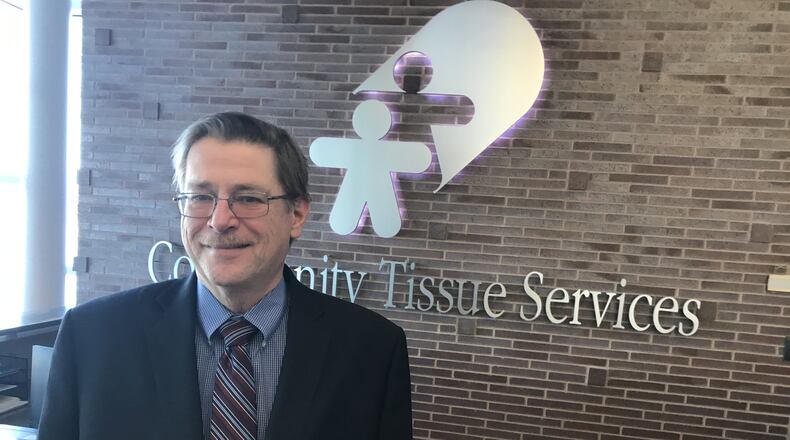Dr. David Smith, the tissue bank’s chief executive, said when a tragedy leaves many victims burned, Community Tissue Services often knows before the news spreads.
MORE: $50M expansion to create 200 new jobs at tissues center
“When you start having five, six people burned in the same event, that can overwhelm a local or regional burn center quickly. If it’s 10 people, you’re talking about something very critical. In New Zealand I think it was 30, and that’s an enormous event and we would be contacted almost immediately when it’s clear it’s a significant event,” he said.
Community Tissue Services is part of the Dayton-based Community Blood Center. The Tissue Services branch is headquartered in Kettering and has 615 employees nationwide and also operates distribution centers in California, Texas, Tennessee, Pennsylvania, and Oregon, and two satellite offices in Idaho and Oregon. One of the tissue bank’s services is harvesting the skin from donors, preparing it for surgeons and shipping it off to everywhere from local hospitals to facilities in other countries.
An individual donor might be able to provide an average of five square feet of skin. Microbiologic tests help determine if the person can be a donor, with about 12% to 15% of would-be donors not able to be a provider of skin, said Smith.
Smith said along with the donations they personally recover, they work with close to 20 other organ procurement agencies in the U.S. who recover tissues and deliver to them.
He said skin is a critical tissue that they always need.
“You can never have enough skin,” Smith said. “Even if you have what you might consider a surplus of skin, it really isn’t, because there are always going to be these events where large numbers of people are burned.”
He said burn injuries occur more in the summer when people are grilling and during late fall as people being turning their home furnaces on.
“You’d be surprised how few people would be burned to use up a lot of what we have for inventory,” he said.
MORE: $9M medical hub to open in Beavercreek
As of Dec. 11, Community Tissue Services Chief Business Officer Christopher Graham said New Zealand providers had 1,292 square feet of skin to treat patients injured in the eruption and at that point Community Tissue Service has provided about one quarter of that need. Graham said Community Tissue Service is preparing to send additional grafts as needed.
Skin can be used as a natural dressing for people with serious burns. A person with smaller, superficial burns can heal on their own. But if they have larger burn wounds a patient can benefit from skin graft surgery for quick healing and minimal scarring. A patient might need more than one operation if they have a large burn.
Skin isn’t just an organ casing but is an important organ on its own and grafts can be life saving.
“When you’re severely burned you have no control over your temperature because that’s what your skin does. And it also retains all the fluid and moisture in your body, so when you put the skin on it’s a barrier that helps your fluid balance. it’s also a barrier to bacterial contamination,” Smith said.
The skin grafts also prepares the person to receive their own grafts from their own skin. If someone has burned through the entire layer of skin, they first need these donor grafs, which cause the body to react with an immune reaction and stimulates formation of new blood vessels
“Once you start getting blood vessels, then they’ll start using a person’s own skin,” he said.
According to Community Blood Center’s 2018 IRS Form 990, the organization reported $127.7 million in revenue from tissue services. Community Blood Center in total had revenue of $151.5 million, making tissue services responsible for 84 percent of the organization’s revenue.
Construction started this month on a $50 million expansion that will double the size of the Community Tissue Services Center for Tissue Innovation and Research — an expansion that will also create more than 200 new jobs, according to the organization.
The 132,000-square-foot expansion at 2900 College Drive in Kettering will more than double the organization’s footprint and will house 16 new clean rooms for additional processing, distribution and supply chain management of grafts of tissue, bone and skin used by doctors, surgeons and dentists worldwide.
About the Author


